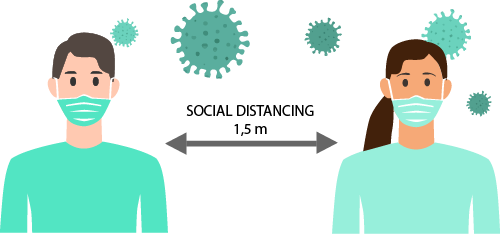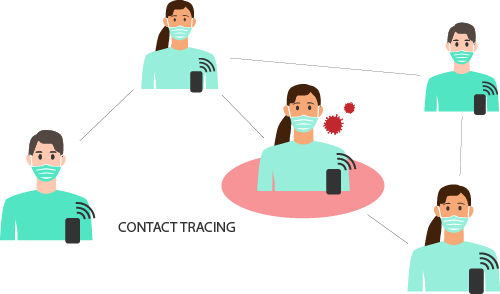Since the end of 2019 the virus SARS-CoV-2 affected lives everywhere. Spreading allaround the world, the virus created a global pandemic: Over 100 million people have been infected with the virus already. Measurements to stop chains of infection and therefor reduce the speed of the spreading are being enforced globally.
A wide prevention to control the number of infections is based on two main actions:
Keeping distance as the easiest and most effective instrument against new infections
Due to the fact, that SARS-CoV-2 mainly spreads through droplets in midair, keeping at least 1,5 meters distance from other people is on one hand easily realizable and on the other hand a highly effective measure against infections.


